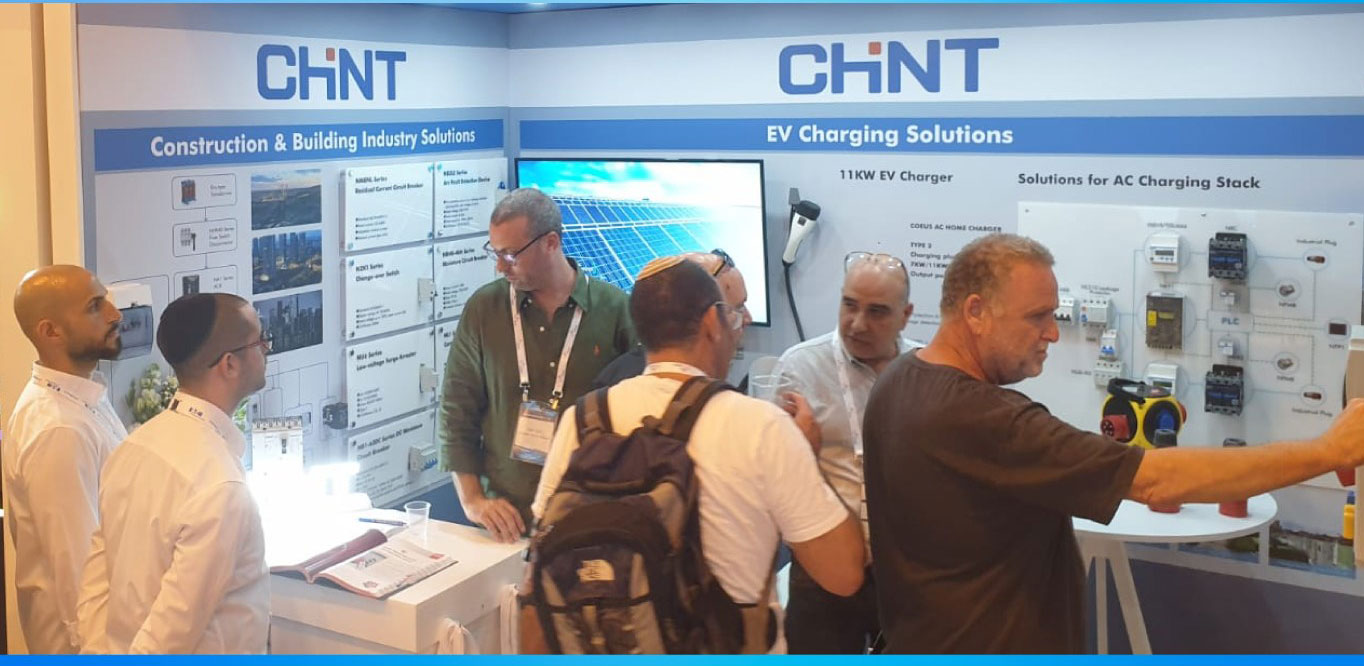Table of Contents |
Unless you choose a molded case circuit breaker (MCCB) of the right type and rating, the device will either trip too soon or too late. In both scenarios, the choice of the wrong unit can lead to safety issues, power distribution problems, and possible equipment damage and losses.
Choosing the right type of MCCB with a rating meant for your intended application is crucial as it helps maintain the safety of your workers and equipment while also ensuring that the system runs with optimum efficiency.
In this guide, we will discuss the types of molded case circuit breakers and how to select the appropriate one for your application.
Types of Molded Case Circuit Breakers
MCCB manufacturers provide performance details such as amp rating, short circuit rating, and whether the unit is current limiting or non-current limiting (standard) breaker. However, the unit type isn’t based on these metrics but on the tripping curves.
A trip curve is a graphical representation of how a circuit protection device behaves in response to current levels. Based on this, MCCBs are segregated into five categories:
Type B
The second most sensitive of all MCCB types, products in this category trip at 3 to 5 times the rated current of the unit and have a tripping time of 0.04 to 13 seconds.
This makes Type-B MCCBs well-suited for resistive applications in residential and light industrial setups. Because the surge current level of these MCCBs is relatively low, they are ideal for resistive elements and loads, such as light fixtures and domestic appliances.
Type C
A step above Type B MCCBs, Type C units trip at 5 to 10 times their rated current. This makes them suitable for use in commercial and industrial applications where there is a possibility of short circuit currents in the electrical system.
Their tripping time is between 0.04 to 5 seconds, and they can handle higher surges, so they work well in industrial settings with small inductive loads such as electromagnets, pumps, small to mid-sized motors, fluorescent lights, and transformers.
Type D
Their tripping time is between 0.04 to 5 seconds, and they can handle higher surges, so they work well in industrial settings with small inductive loads such as electromagnets, pumps, small to mid-sized motors, fluorescent lights, and transformers.
For example, Type D MCCBs are an ideal choice for industrial settings involving large battery charging, large winding motors, discharge lighting and X-ray machines, and other such medical/radiological equipment, etc.
Type K
For example, Type D MCCBs are an ideal choice for industrial settings involving large battery charging, large winding motors, discharge lighting and X-ray machines, and other such medical/radiological equipment, etc.
This makes them suitable for handling inductive and motor loads where a high starting current is expected.
Type Z
The most sensitive of all types of MCCBs, Type Z units will trip at 2 to 3 times their rated current. The tripping time is 0.04 to 5 seconds, which makes them an ideal choice for exceptionally sensitive devices that are easily damaged even by low current surges. Typically, such units are used in systems serving semiconductor-based IT and medical equipment.
How Are Molded Case Circuit Breakers Rated?
MCCBs are rated based on multiple variables, and each of these impacts their performance. Manufacturers offer accurate data pertaining to these ratings, which include:
- Rated frame current/Frame size (Inm): This indicates the size or the dimension of the plastic casing or shell of the unit. Also, it is indicative of the maximum current that the casing/shell of the unit can handle.
- Rated current (In/Ie): This is the functional range of the unit or the maximum current value above which the unit will trip.
- Rated voltage (Ue): This is the functional voltage of the breaker or the continuous operating voltage that the unit is designed for. Typically, this value is close to or the same as the standard system voltage.
- Rated insulation voltage (Ui): This is the maximum voltage range that the unit can resist, as per laboratory tests. This value is usually higher than the rated voltage to allow for a margin of safety.
- Rated Impulse Withstand voltage (Uimp): This is the transient surge voltage that the unit is designed to handle. Testing is done at a standard size of 1.2/50Âs. So, a rating such as Uimp=8kV means that the unit was tested at a peak current of 8kV at a standard size of 1.2/50.
- Unlimited short circuit breaking capacity (Icu): This is the maximum fault current that the breaker will clear, but there is a likelihood that the unit may get permanently damaged in the process.
- If the fault current exceeds this value, the breaker may not trip, and it will get permanently damaged. This is a factor that impacts the cost of the unit. The breaking capacity should be higher than the possible fault current level. For residential applications, going above 10kA would be good enough.
- Short circuit Breaking Capacity (Ics): This is typically a percentage of the Icu and refers to the maximum fault current at which the unit will trip without suffering permanent damage. Typically, this refers to a fault level at which the unit can trip three times and yet be reusable after a reset. The higher this value, the more reliable the unit is.
To understand how these ratings work, consider the example of a breaker that has:
- Icu: 40,000 Amperes
- Ics: 25,000 Amperes
This breaker will clear a fault below 25kA without any problem. However, if the fault level is between 25 kA and 40 kA, the fault will be cleared, but the breaker most likely will get permanently damaged in the process.
If the fault level exceeds 40kA, the unit will not clear the fault, and another mechanism/device will be required for circuit protection.
In addition to these manufacturers’ ratings, when buying a molded case circuit breaker, it is also crucial to ensure that they are designed and tested to meet various quality, performance, and/or reference standards and certifications such as:
- The UL489 standard for molded case circuit breakers
- The NEMA AB-1
- The IS 13497- 1/ 2
- The IEC 60947- 1/ 2
- Testing authority certificates: KEMA, ASTA, TUV
- Location-specific certifications: DEKRA, CCS, CE, and others.
Given the extremely important role that MCCBs play in the safety and performance of electrical systems, additional testing is vital to ensure that the unit is operating as expected. Such tests should include:
- Insulation resistance test: This helps gauge the insulation level between individual phases and between supply and load. The MCCB is isolated to perform this test. The resistance measure must exceed the manufacturer’s guide to get the required level of protection.
- Contact Resistance Test: This shows if the unit is functioning as required by gauging the resistance across poles. The unit should have a very low voltage drop.
- Overload Tripping Test: With this, an electrician can test the overload tripping of the unit. This is done by applying 300% of the breaker rating to each contact.
- Thermal Protection Test: An overcurrent that is 3 to 4 times the rated current of the unit is applied to the breaker to gauge the level of protection offered in overload conditions.
- Thermal Protection Test: An overcurrent that is 3 to 4 times the rated current of the unit is applied to the breaker to gauge the level of protection offered in overload conditions.
- Other tests may also be used to ensure the proper functioning of the breaker. A wide variety of testing equipment and testing techniques are required to conduct these tests. It goes without saying that the professional conducting these tests will need an in-depth understanding of how MCCBs work and the relevance and impact of various reference values.
How Do I Choose The Right MCCB?
When selecting a molded case circuit breaker for a specific application, consider these 5 factors:
- The frame size: It is crucial to pick a unit with appropriate dimensions for the available space. Usually, the same frame size is available with various current ratings, so consider the availability of space and the line’s calculated load when picking the correct unit. The rated current classification is usually chosen based on the priority coefficient (1.25).
- Rated insulation voltage: This reference value should be used to determine the creepage as well as clearance distance. If the rated insulation voltage has not been provided, use the rated working voltage for this calculation.
- Rated current: For MCCBs, the rated current is not a fixed value, as it is possible to adjust the amp trip below the maximum overload protection current.
- Ultimate Short-Circuit Breaking Capacity (Icu): Many MCCBs offered for domestic application have different Icu for the rated current of a frame level. When selecting the unit, it is crucial to ensure that the expected short circuit current is below the Icu to ensure that in case of a fault, the unit can handle the fault current without being damaged.
- Shunt trip for protection relays: When an MCCB trip due to an external signal from a protection relay, it is known as a shunt trip. If such protection relays (sensors) are part of the electrical system, you must choose an MCCB that accepts inputs from such sensors.
How Do I Know What Size Circuit Breaker I Need?
An MCCB should be sized based on both the operating current as well as fault currents. In order to do so, you need to consider 3 criteria:
- The rated working voltage: This has been defined above. When choosing a unit, ensure that the working voltage is similar to the system’s voltage.
- The trip value: Make sure that the trip range of the MCCB allows for the adjustment of the unit to respond appropriately to the current drawn by the load.
- The breaking capacity: Choose a unit with a breaking capacity higher than all possible fault currents for a system.
Conclusion
Molded case circuit breakers offer excellent protection against overcurrents, short circuits, and other faults that could harm a system. The most important thing to remember when choosing an MCCB is to pick the right size, trip value, and breaking capacity for your particular application. Make sure to research the capabilities of each unit before making a purchase decision.
If you are looking for high-quality molded case circuit breakers, Chint Global is your ideal partner. With our vast experience and expertise in the industry, we can help you select the perfect unit for your specific application. We also offer a wide range of other electrical products that meet the highest quality standards. Contact us today to learn more about our products and services.















